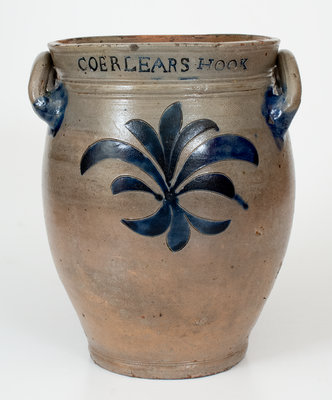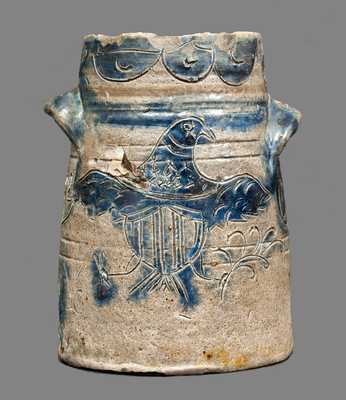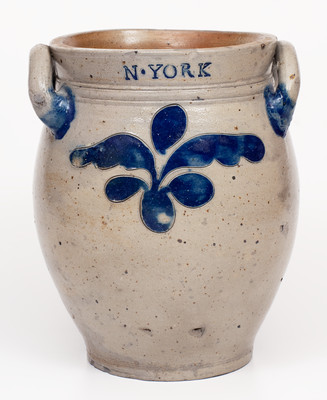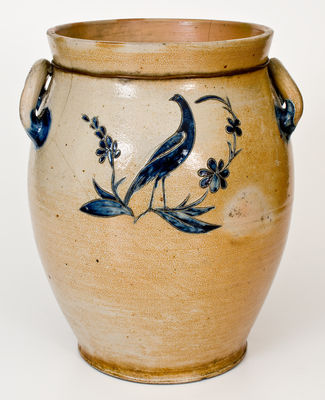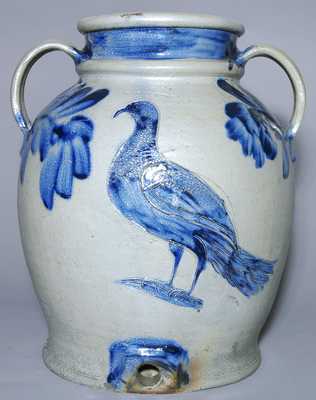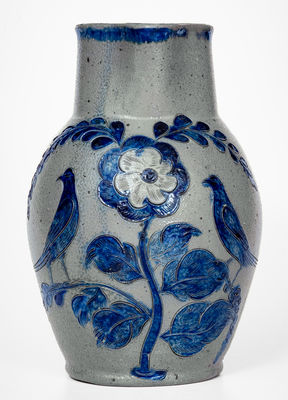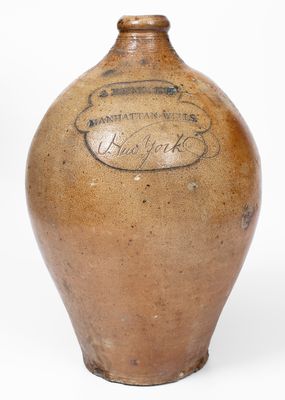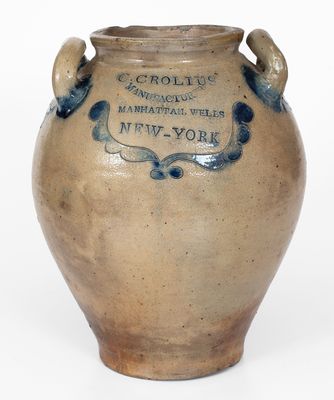Extremely Rare Two-Gallon Stoneware Jug with Cobalt Horse Decoration and New York City Druggist's Advertising, New York City origin, circa 1840, cylindrical jug with semi-squared spout, decorated with a brushed folk art design of a horse with spotted body, cobalt-filled head and neck, and pierced eye, running atop a stylized ground. Impressed at shoulder with large-font advertising for "S. BOWNE DRUGGIST N.Y." Cobalt highlights to maker's mark, capacity mark, and lower handle terminal. Freehand horse decorations are considered very rare in 19th century American stoneware production. Compounding the rarity of this example is the fact that most advertising pieces from this period lack figural motifs of any kind. This example's large druggist advertising, made for a New York City merchant, adds to its appeal. Samuel Bowne (born circa 1812), was the son of Richard M. Bowne, another Manhattan druggist. Remarkably, fragments of stoneware vessels made by Thomas Commeraw were excavated from the property of Richard M. Bowne and are in the collection of the New York State Museum. Taken along with this jug, those fragments demonstrate the close relationship between American stoneware potters and merchants of all kinds--in this case druggists who needed vessels to hold not only pharmaceuticals, but the paints, dyes, oils and other products in which they traded. Based on a careful study of Samuel Bowne's business history, this jug would have been made sometime 1838-1848 (Bowne went out of business for a period around 1842); the appearance of the jug would place it earlier within this time frame. Provenance: Acquired by the consignors' father in the 1960s. Very nice condition with some in-the-firing chipping to underside. A faint 5 1/4" line to underside. A small amount of wear to cobalt. H 13 3/4".








